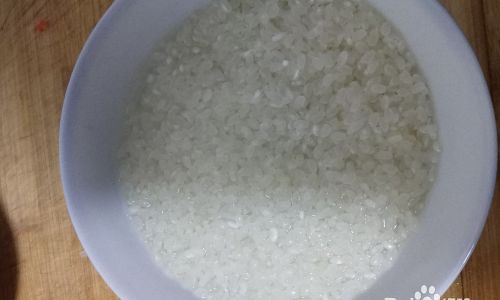Table of content
Introduction: The Art of Crafting a Perfect Stew
In the realm of culinary delights, stews occupy a unique and cherished place. They are the epitome of comfort food, blending an array of ingredients into a harmonious, flavorful dish that warms the soul and nourishes the body. Whether you’re a seasoned chef or a home cook eager to explore new recipes, mastering the art of making a hearty stew is a rewarding endeavor. This comprehensive guide will walk you through the process, from selecting the right ingredients to perfecting your cooking technique, ensuring that your stew is not only delicious but also a visual and aromatic feast.
Understanding the Basics of Stew Making
Before diving into specific recipes, it’s crucial to grasp the fundamental principles of stew making. A stew is essentially a combination of meat, vegetables, and broth, slow-cooked over low heat until the flavors meld together and the meat becomes tender. The key elements that distinguish a great stew from a good one are:
-
Quality Ingredients: Fresh, high-quality ingredients are paramount. Choose meats that are lean yet flavorful, such as beef chuck, pork shoulder, or chicken thighs. Vegetables should be fresh and vibrant, adding both texture and nutrition to the dish.

-
Low and Slow Cooking: The slow cooking process is what transforms ordinary ingredients into a rich, flavorful stew. Cooking at a low temperature allows the collagen in the meat to break down, resulting in tender, fall-apart meat. It also gives the vegetables time to soften and release their juices, enriching the broth.
-
Aromatics and Seasonings: Aromatics like onions, garlic, and carrots form the backbone of the stew’s flavor profile. Seasonings such as salt, pepper, thyme, rosemary, and bay leaves add depth and complexity. Don’t be afraid to experiment with spices like paprika, cumin, or even a hint of chili for a unique twist.
-
Liquid: The liquid in a stew can be broth, wine, beer, or even a combination. It serves as the base that everything cooks in, absorbing flavors and creating a sauce. Be mindful of the quantity; too much liquid will result in a soup, while too little can dry out the stew.
-
Thickness: The consistency of a stew should be neither too thick nor too thin. This is often achieved through the natural reduction of liquid during cooking or by adding a thickening agent like flour, cornstarch, or even mashed potatoes.
Step-by-Step Guide to Making a Hearty Stew
Now, let’s break down the process into manageable steps, using a classic beef stew as an example.
Step 1: Preparation and Ingredient Selection
- Meat: Select about 2-3 pounds of beef chuck roast or stew meat, trimmed of excess fat and cut into bite-sized cubes.
- Vegetables: You’ll need a mix of sturdy vegetables that can withstand long cooking times, such as onions, carrots, celery, potatoes, and peas (added later).
- Aromatics: 1 large onion, chopped; 3-4 garlic cloves, minced; and a few carrots, sliced or diced.
- Seasonings: Salt, black pepper, dried thyme, rosemary, bay leaves, and paprika (optional).
- Liquid: 4 cups of beef broth (homemade or store-bought), plus a splash of red wine (optional) for added flavor.
- Thickening Agent: If needed, 2-3 tablespoons of all-purpose flour or cornstarch.
Step 2: Preparing the Ingredients
-
Meat Preparation: Pat the beef cubes dry with paper towels to remove any moisture. Season generously with salt and pepper. This helps to build flavor and create a nice sear on the meat.
-
Vegetable Prep: Peel and chop the onions, carrots, celery, and potatoes. Keep the sizes consistent so they cook evenly.
-
Aromatics: Peel and mince the garlic.
Step 3: Searing the Meat
-
Heating the Pan: Preheat a large, heavy-bottomed pot or Dutch oven over medium-high heat. Add a tablespoon or two of oil (such as olive oil or vegetable oil) to coat the bottom.
-
Searing: Working in batches to avoid overcrowding, sear the beef cubes until they are browned on all sides. This should take about 3-4 minutes per batch. Remove the seared meat to a plate and set aside.
-
Deglazing: Once all the meat is seared, pour in a bit more oil if needed and add the chopped onions, carrots, and celery. Sauté until the vegetables are softened and the onions are translucent, about 5-7 minutes. Add the minced garlic and cook for another minute until fragrant.
-
Adding the Meat Back: Return the seared beef cubes to the pot, nestling them into the vegetables.

Step 4: Adding Seasonings and Liquid
-
Seasonings: Sprinkle the dried thyme, rosemary, bay leaves, and paprika (if using) over the meat and vegetables. Stir to combine.
-
Liquid: Pour in the beef broth and, if desired, a splash of red wine. Stir to combine, ensuring all the ingredients are submerged in the liquid. If the stew looks too dry, you can add a bit more broth. If it looks too wet, you can reduce the amount slightly.
Step 5: Simmering
-
Bringing to a Simmer: Bring the stew to a gentle simmer over medium heat. Once simmering, reduce the heat to low, cover the pot, and let it cook slowly.
-
Cooking Time: For tender, fall-apart beef, you’ll need to cook the stew for at least 2-3 hours, stirring occasionally to prevent sticking. If using potatoes, add them in the last 45-60 minutes of cooking, as they cook quickly.
-
Thickness Check: As the stew cooks, the liquid will reduce and thicken naturally. If it becomes too thick, you can add a bit more broth. If it’s too thin and you prefer a thicker stew, mix a slurry of flour and water (1 tablespoon of flour per 1/4 cup of water) and stir it into the stew in the last 15 minutes of cooking.
Step 6: Finishing Touches
-
Adding Peas: If using fresh or frozen peas, add them in the last 5-10 minutes of cooking. They should be tender but still bright green.
-
Taste and Adjust: Once the stew is cooked to your liking, taste and adjust the seasoning with salt and pepper as needed.
-
Serving: Ladle the stew into bowls, ensuring each serving has a mix of meat, vegetables, and broth. Serve with crusty bread on the side to soak up the delicious juices.
Step 7: Optional Enhancements and Variations
- Herb Infusion: For an added layer of flavor, tie a bouquet garni (a bundle of fresh herbs like parsley, thyme, and bay leaves tied together with kitchen twine) and add it to the stew while it cooks. Remove it before serving.
- Wine or Beer: Substituting a cup of red wine or a dark beer for part of the broth can add complexity and richness to the stew.
- Root Vegetables: Experiment with different root vegetables like rutabaga, turnips, or parsnips for a unique twist.
- Dumplings or Noodles: For a heartier meal, add dumplings or noodles to the stew in the last 15-20 minutes of cooking.
Conclusion: The Joy of Sharing a Hearty Stew
There’s something inherently satisfying about making a stew. It’s a dish that invites patience, creativity, and a deep connection to the ingredients. As the aroma fills your home, anticipation builds, and the final result is a meal that not only nourishes but also brings people together. Whether you’re feeding a family, hosting friends, or simply treating yourself, a hearty stew is a timeless, comforting choice.
Remember, the beauty of stew lies in its versatility. Feel free to adapt the recipe to your taste preferences, dietary restrictions, or seasonal availability of ingredients. With practice, you’ll develop your own unique style, crafting stews that become cherished family recipes, passed down through generations.
So, the next time you’re in need of a comforting, satisfying meal, reach for those ingredients, fire up the stove, and let the slow, steady process of stew making work its magic. Enjoy the journey, savor the flavors, and share the love that goes into every hearty bowl.




0 comments